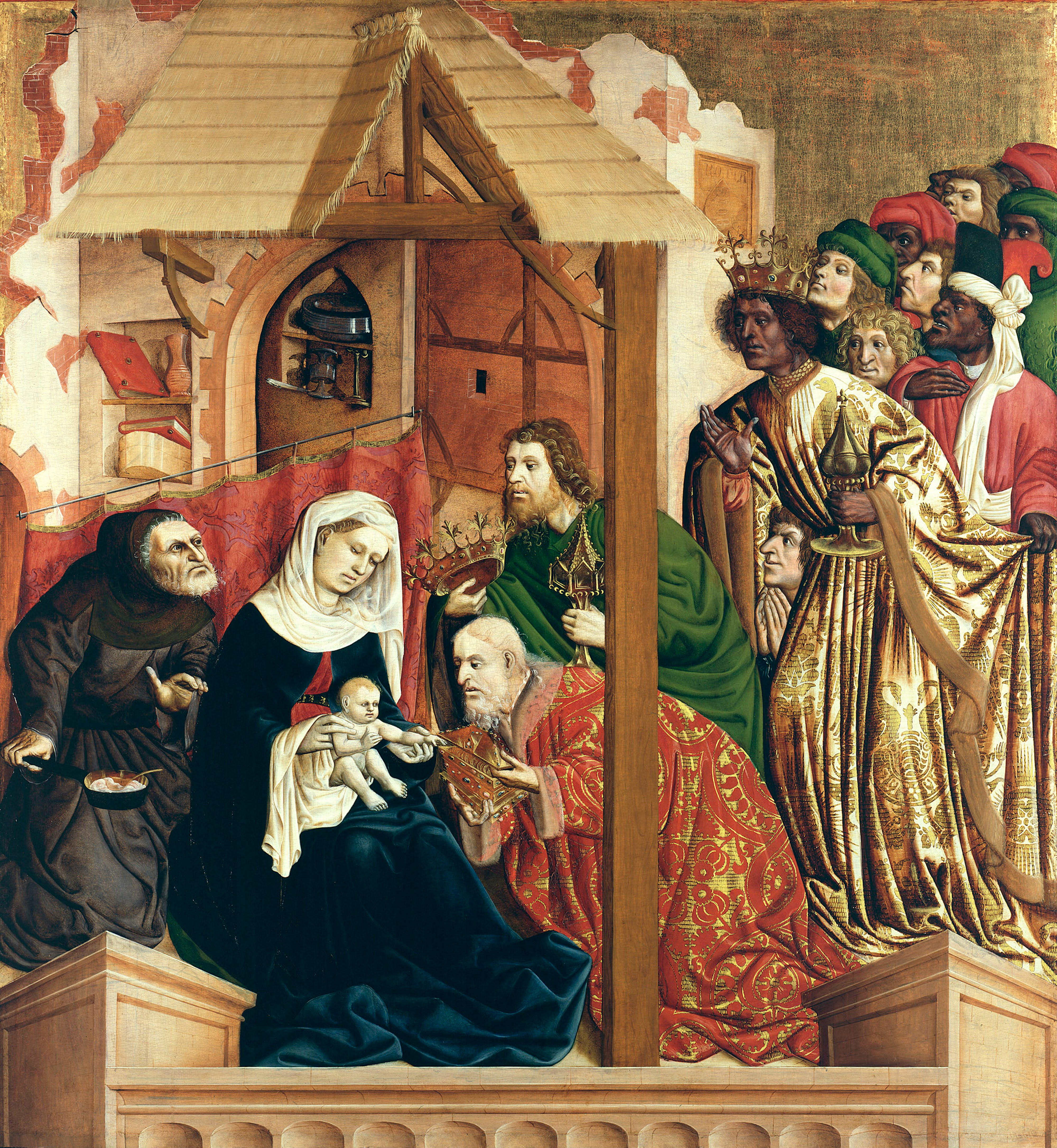Although it is commonly accepted today, especially in Europe, that one of the Three Kings is Black, this was not original to the tale. Although in western Christianity the Kings had been named as Melchior, Balthasar, and Caspar as early as the sixth century, it was only in the Middle Ages that commentators speculated at length about the lands of their origins. By the thirteenth century texts were variously specifying that they had come from Persia, India, Arabia, the Mediterranean, Nubia, Sheba, and other legendary lands, but the image of a Black Magus did not begin to appear until the fourteenth century and only became commonplace after 1500. By this time, the Magi had been established in western Christianity as Kings who could be taken to represent all of humanity, one for each of the three known continents of Asia, Europe, and Africa. The global reach of Christianity was an important claim at a time when Christians in Europe were bullish about their advances against Muslims in the Iberian peninsula but also anxious about their inability to reconquer the Holy Land or to halt the expansion of the Ottomans in Anatolia and the Balkans. As in the tradition of St. Maurice, the Black Magus shows how Blackness could be used positively as a symbol that countered many prevailing negative associations and asserted the universal claims of Christianity versus those of Islam.
Hans Multscher’s Adoration, only one of a series of paintings that decorated a massive altar with scenes from the life of Christ, stands out as the most notable early example of the trend, and we can see developing here many of the conventions that came to characterize the Black Magus. He stands off to one side, but this is because he is the youngest of the three, as his clean-shaven face suggests. In exchange Multscher gives him the flashiest, most exotic clothing and attendants. His noble bearing and rich raiment make clear that this is neither a demeaned nor a demonic figure, but rather one to be admired.
Multscher also appears to be working out how to depict a Black man as one of the Kings. Although the man has distinctive hair and skin tone, his facial features are otherwise little different from his fellow Magi, which some commentators have taken to mean that Multscher had not had much contact with Africans. While this is perhaps true, it is also worth noting that he seems to have taken care to give the Black retainers wider, rounder noses and, at least for one of the men in the back, a flatter face similar to the light-skinned man behind him. Whether Multscher was working from ignorance and imagination, perhaps drawing from travellers’ accounts, or whether he was choosing what he understood to be “noble” features for the king to distinguish him from his attendants is thus unclear.
Jeff Bowersox
Deutsch
Source: Hans Multscher, Die Anbetung der hl. Drei Könige; Außenflügel des Wurzacher Altars (1437) via Wikimedia Commons.

Hans Multscher, The Adoration of the Magi (1437) by Jeff Bowersox is licensed under a Creative Commons Attribution-ShareAlike 4.0 International License. Permissions beyond the scope of this license may be available at https://blackcentraleurope.com/who-we-are/.
